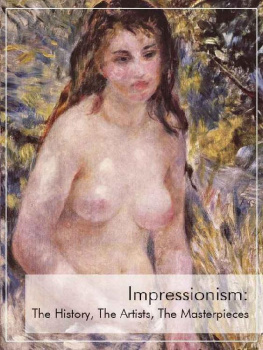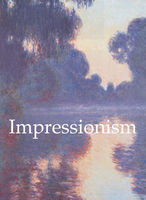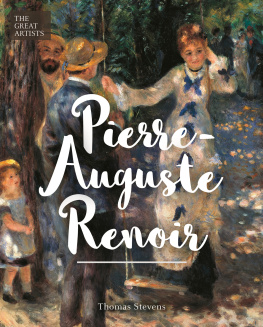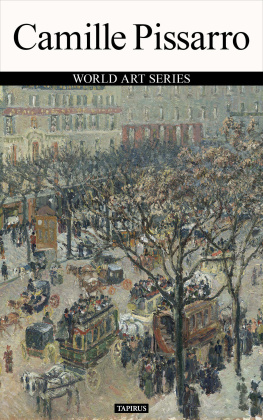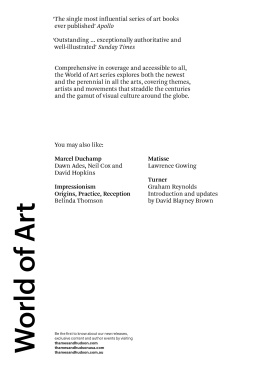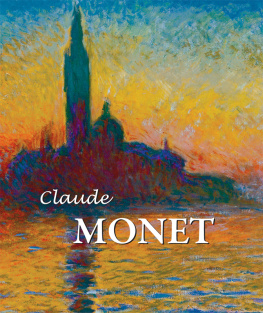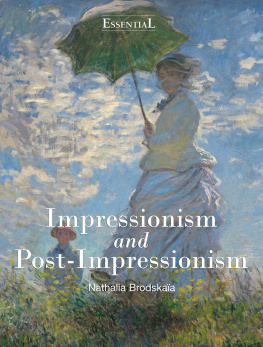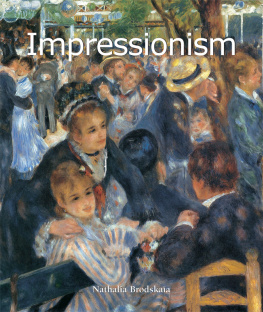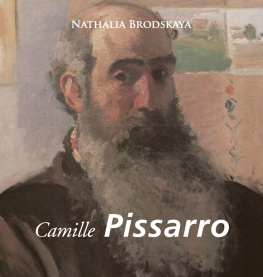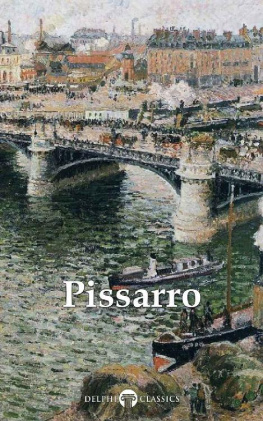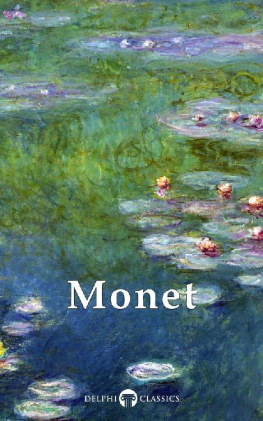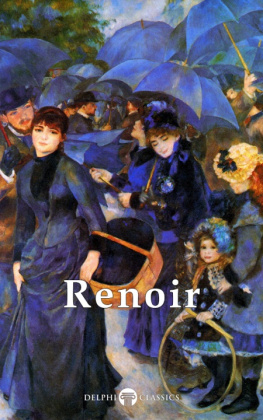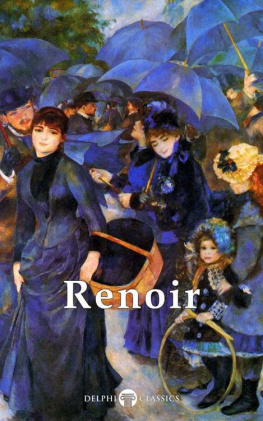V. Kuvatova
Impressionism:
The History, The Artists, The Masterpieces

Impressionism: The Artists and The Masterpieces
EDOUARD MANET
The controversial figure of Edouard Manet stands at the very beginning of the Impressionist art movement. Whenever we try to understand the phenomenon of Impressionism we have to peer into his art in search of inspiration that the future Impressionist painters drew from his artworks.
Manet always wanted the official recognition of his art but he never painted in a traditional style that would open a short and comfortable way to such recognition. He never participated in the Impressionist exhibitions but was always admired by the Impressionist painters. He never praised the Impressionist interest in plein air, but his fierce attention to the contemporary life became one of the basic principles of Impressionist art. Manet got very traditional, classical art training, but we would never trace any influence of Ingres and other Neoclassical painters in his works. Instead, the influence of the decidely unclassical and incomprehensible genius of Goya is well articulated in a number of his paintings.
Edouard Manet was born in Paris in 1832, in a very good family of lawyers and diplomats. He was supposed to enter LEcole Navale (Navigation school) but failed his exams. He persuaded his family to allow him to try a career of a painter and entered the Fine Arts School. But he soon demonstrated his independent approach to painting and some indifference to traditional rules. I paint what I see and not what the others like to see that was his basic principle as a painter.
His early artworks reminds one of the style of Dutch and Spanish paintings of the 17th century. Manet travelled a lot and studied the great Old Masters Frans Hals and Diego Velzquez. But he was most impressed by the passionate and word-scale talent of Francisco Goya. Goyas direct influence can be seen in a number of his works - The balcony; The Guitar Player; The Execution of the Emperor Maximilian and others.
But soon Manet found his individual artistic method that would become the main feature of his art he mixed traditional painting formulae and their expressive values with the contemporary life. Thus, well before Impressionism explicitly claimed its aims and principles, Manet had defined the main terms of the artistic polemic the individual artistic avenue against the universal academic traditions and the use of painting methods that could define the contemporary subjects and meet modern aesthetic demands.
Manets submission was first admitted to the Salon in 1861. In 1863 his The Bath (lately renamed The Luncheon on the Grass) was predictably turned down and then exhibited at the Salon des Refuses. No other artwork raised such a whirlwind of criticism as this unusual painting concealing a great deal of allusion and mystery. But this furious reaction of the public and critics did not demolish Manet as a painter. To the contrary, all the fuss paved his way to real glory.
In 1864 the Salon accepted two of Manets artworks, and in 1865 he exhibited Olympia that caused a scandal even more loudly than The Luncheon on the Grass. It was again inspired by an Old Master painting Titians Venus of Urbino. Manet cited a famous classical artwork without a trace of the presumed reverence. The ancient divine reincarnated into a fashionable parisienne, boldly contemporary. Moderness is consciously stated by many details the girls flirty shoes, the piquant jewelry on her neck and even by the ornament of the shawl hanging from the bed. The model Victorine Meurent was painted with such devoted realism and with so little attention to the ideological dogmas of the Second Empire, that the artwork boosted a wave of revolt among the traditionalists, even though that could hardly explain their shock.
Despite the critical attitude of academic circles toward his art, Manet continued to court the Salon. Some of his works were turned down, others were accepted. His popularity grew steadily. In 1866 his modern style got a passionate support from Emile Zola, who would later become Manets close friend. Manet carefully chose his friends and company, and always felt affection towards the crme de la crme of French society. Berthe Morisot, his sister-in-law and the granddaughter of the brilliant and famous 18th century painter J.H.Fragonard, posed for his pictures. Intelligent, well bred and educated, Edgar Degas became one of his best friends, as well as the politician Antonin Proust who would lately become a Minister of Fine Arts. Manet delicately but decisively distanced himself from the gang of Impressionist painters that admired him so much. Later though, he did find a pleasure in Monets company, visited him in Argenteuil and even tried painting en plein air.
In 1877, Manet once again provoked the academic circles by Nana representation of a young girl powdering her face in presence of her companion. Naturally, the artwork was turned down by the Salon.
The official recognition came to Manet a little bit too late - when he was already seriously ill (He suffered from syphilis for a long time). In 1881, he was awarded with a medal of the Academy for his Portrait of Mr. Pertuisait and was nominated a Cavalier of the Legion of honour following the proposal of his friend A.Proust, the minister of Fine arts in the French Government.
In 1882 he exposed at the Salon his last artwork A Bar at the Folies-Bergre one of the greatest masterpieces and mysteries of 19th century painting.
Manet died in Paris in April, 1883.
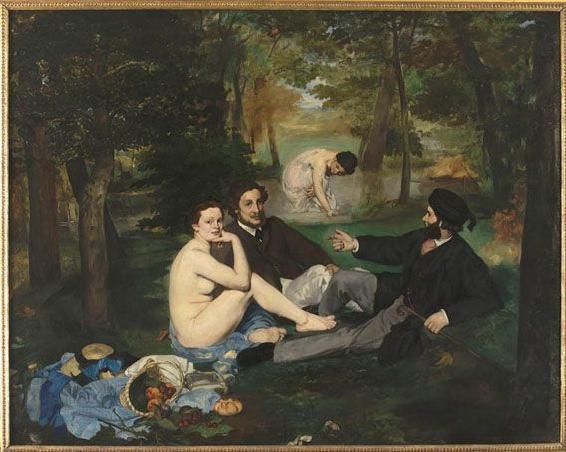
The Luncheon on the grass/Edouard Manet/Muse d'Orsay, Paris
E. Manet. The Luncheon on the Grass. 1863
In this artwork, which proved its ability to raise a great scandal with every further exposition, Manets sketchy technique manifests itself very explicitly. The background is completely spared of any details and reminds one of a patchwork. The relationship between the figures' hands, legs and feet give an impression of a slightly sexual subtext. The frog in the left lower corner and the bird above the figures seems a painters whim or joke. The huge as compared to the boat female figure in the backgrounds remains a complete mystery.
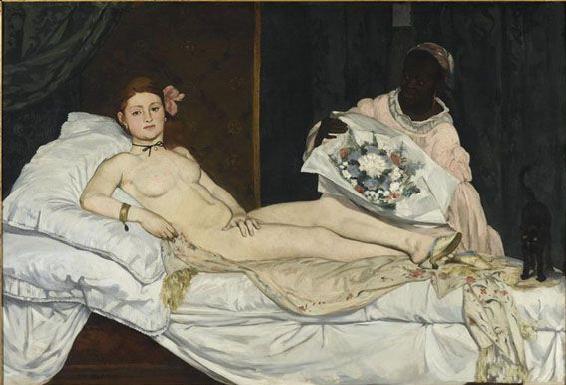
Olympia/Edouard Manet/Muse d'Orsay, Paris
E. Manet. Olympia. 1863
The ancient divine reincarnated into a fashionable parisienne, boldly contemporary. The contemporaneity is consciously stated by many details the girls flirty shoes, the piquant jewelry on her neck and even by the ornament of the shawl hanging from the bed. The model, Victorine Meurent, was painted with such devoted realism and with so little attention to the ideological dogmas of the Second Empire, that the artwork boosted a wave of revolt among the traditionalists, even though these reasons could hardly explain their shock.
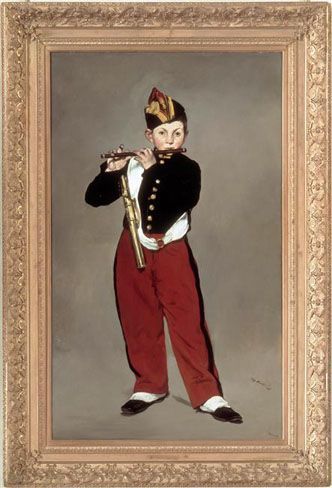
The Fifer/Edouard Manet/Muse d'Orsay, Paris
E. Manet. The Fifer. 1866
The painting was turned down by the Salon of 1866. The jury found the color contrasts of the artwork too brusque. But that was one of the reasons why the painting was much admired by the public. Here Manet completely neglected the background it is painted simply as a monotony of yellowish grey paint mass. The color of the background is ideal to evoke the brightness of the boys figure, boldly outlined and contrasting the tones of red, black, white and yellow.

